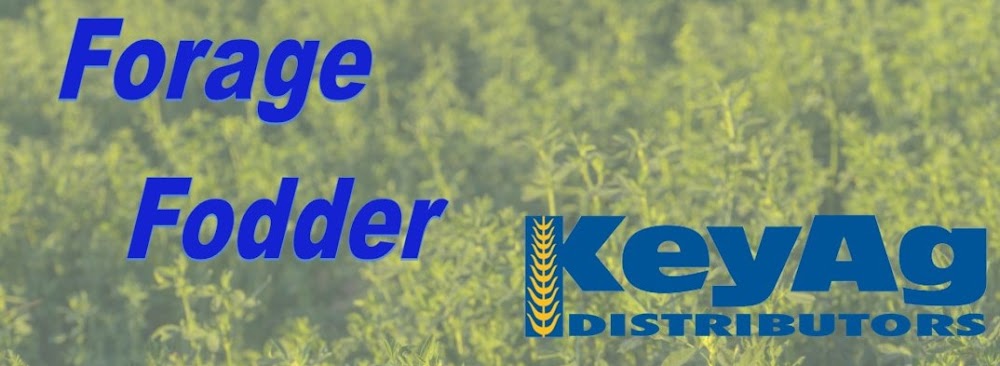Drivers for the hay industry include regional drought, trade disruption and rising feed prices.
- Drought curtailed non-irrigated hay production across the Northwest.
- High temperatures and smoke hindered irrigated hay production.
- Shipping disruptions continue to cap export capacity.
Northwest FCS’ 12-month outlook for the hay industry calls for variable returns. Producers in drought stricken areas produced less hay and profitability will be lower. Producers with stable irrigation supplies will be profitable. Rising input costs will weigh on margins in 2022.
Northwest Situation
Drought reduced hay production across the Northwest. The USDA estimates national hay production will decrease 6%. This includes a 10% reduction in alfalfa production and a 4% reduction in grass hay production. This is primarily driven by the drought in the West. Total Northwest hay production decreased by 19%, 6.4 million tons. Montana led with the largest losses down 4.2 million tons, or 37%, from 2020.
In Oregon, instances of rain damaged first cutting. High temperatures hindered second cutting but left producers with hopes of four cuttings. Abnormally cool weather at the end August cut short hopes of a fourth cutting. Frost trimmed third cutting yields. Weather extremes and inadequate irrigation supplies will leave Oregon hay production down significantly year over year. Anecdotal reports suggest yield losses could exceed initial USDA estimates.
In Washington, first cutting alfalfa was high-quality and sold between $210 and $220 per ton. Second cutting was harvested during extreme high temperatures, up to 118 degrees. The high temperatures did not allow for dew to settle at night. A large portion of second cutting was baled abnormally dry, without dew. This excessively dry alfalfa has few leaves and is lower quality. Despite lower quality, the price continued to increase with trades ranging between $210 and $230 per ton. Third cutting was harvested at the smokiest part of the summer. Smoke reduces yield and discolors or bleaches hay in the windrow. Widespread smoke damage and instances of rain damage limited high-quality third cutting alfalfa production. High-quality third cutting is trading between $220 and $240 per ton. Rain or smoke damaged hay is trading around $200 per ton.
Timothy was priced high with active competition among exporters. The drought limited hay production in dryland production regions across the Northwest including non-irrigated areas of eastern Washington and the Idaho panhandle. Export timothy prices have traded as high as $350 per ton with a super-premium price on small, square bales of grass hay.
In Idaho, irrigation water supplies varied. Producers in the Magic reservoir water district received extremely limited irrigation supplies, not enough for a first cutting. Other irrigation districts had enough irrigation water for first cutting and a partial second cutting. Most irrigation districts delivered normal or near normal water supplies. First cutting harvest was hindered by cool temperatures. Second and third cuttings were stressed by smoke from regional wildfires. Dairy quality hay began the season around $125 and escalated to around $250 to $275 per ton.
In Montana, a second year of drought left hay inventory at critically low levels. Normally, hay prices are $80 to $125 per ton. Because of the shortage, hay prices have jumped as high as $400 per ton. These prices are not sustainable for cow/calf producers. Anecdotal reports suggest producers will increase cow culling rates to limit the need for expensive hay. Fewer cows will limit demand for hay into the 2022 season. Assuming a normal hay harvest in 2022, hay prices would begin to return to normal as producers rebuild feed inventory.
USDA Disaster Program
In response to the severe drought conditions in the West, Emergency Assistance for Livestock, Honey Bees and Farm-raised Fish (ELAP) expanded to include freight costs. In 2021, USDA updated the ELAP policy to help cover the cost of transporting feed for livestock that rely on grazing. This includes places where:
- Drought intensity is D2 for eight consecutive weeks as indicated by the U.S. Drought Monitor.
- Drought intensity is D3 or greater.
- USDA has determined a shortage of local or regional feed availability.
Under the revised policy for feed transportation cost assistance, eligible ranchers will be reimbursed 60% of feed transportation costs above what would have been incurred in a normal year. Producers qualifying as underserved (socially disadvantaged, limited resource, beginning or military veteran) will be reimbursed for 90% of the feed transportation cost above what would have been incurred in a normal year.
A national cost formula, as established by USDA, will be used to determine reimbursement costs which will not include the first 25 miles and distances exceeding 1,000 transportation miles. The calculation will also exclude the normal cost to transport hay or feed if the producer normally purchases some feed. For 2021, the initial cost formula of $6.60 per loaded mile will be used (before the percentage is applied) but may be adjusted on a state or regional basis.Insurance
Many producers, both large and small, purchase pasture, rangeland and forage insurance to add risk protection for their operations during droughts like this year. Hay growers have started to participate in this program. Most loss ratios are 150%-300%, favorable for the insured. The sales closing deadline for 2022 coverage was recently moved to Dec. 1, 2021.
Dairy
Exports
Despite widespread shipping disruptions grass hay exports grew in the first seven months of the year when compared to 2020. Alfalfa exports fell a modest 2%. This comes despite China buying 23% more alfalfa year over year. Japan, Saudi Arabia, South Korea and the UAE all purchased less hay year over year. However, the data explains trends for the end of the 2020 marketing year. Initial indications from July suggest tighter hay inventory and less demand as prices increase.
Anecdotal reports suggest exports will decrease significantly. Shipping disruptions caused by port congestion may leave exporters with unsold inventory. Normally, unsold inventory is discounted and exported to generate cash flow. This year there is enough drought driven domestic demand to clear the market of excess inventory.






No comments:
Post a Comment